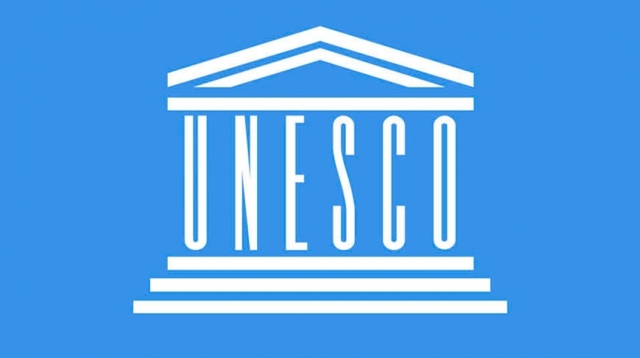Camino de Santiago: Why is it a World Heritage Site?
Since 1993, the Jacobean routes have been recognized as World Heritage Sites, a recognition that would be extended in 1998 and 2015 with the French and northern Jacobean routes of the Peninsula
Camino de Santiago, recognition as a World Heritage Site
The Camino de Santiago has received numerous international awards in recent decades for the incalculable value of its cultural heritage for humanity; An example of this is its consideration as an Asset of Cultural Interest or having the honor of becoming the first European Cultural Itinerary, distinctive granted by the Council of Europe in 1987.
One of the most important recognitions in the history of the Camino de Santiago took place in 1993, when Unesco declared as a World Heritage Site the set of pilgrimage routes to Santiago de Compostela that goes from the Pyrenees to Galicia (that is, the one known as Camino Francés), a rating up to that same year reserved only for historical groups and cities of the world. The union of the Camino de Santiago to the World Heritage List was decided in the Colombian city of Cartagena de Indias coinciding with the end of the Year Xacobeo 1993, following the previous distinction granted to the city of Santiago de Compostela, in 1985.
Expansion with the Caminos de Santiago in France
The declaration of the end of 1993 was preceded by the distinction of the Camino de Santiago, on May 17 of the same year, as European Cultural Heritage in Brussels by the Ministers of Culture of the member countries of the European Economic Community (European Union). Five years later, in 1998, Unesco would extend its declaration including the so-called "Caminos de Santiago de Compostela in France", which cover the following Jacobean routes: Camino de Tuy, Camino de Limoges, Camino de Tours and Camino de Arles or Toulouse
Expansion with the Northern Ways of Santiago
However, it would not be until July 2015 when Unesco would end up extending the recognition of the Camino de Santiago on the List of World Heritage Sites with the so-called "Paths of Santiago del Norte de la Península". In this way, all the paths that comprise the routes of the Coastal North Road, the Primitive Way, the Basque-Riojan Way and the Way of Liébana would be added to the list. This extension, according to Unesco, is due to "the need to explain the origins of the Jacobean phenomenon", which was born around the ninth century with the possible discovery of the tomb of the Apostle in Santiago and the first pilgrimages from the kingdom of Asturias.
Criteria for recognition as a World Heritage Site
We already know when the declaration and its successive enlargements took place, in addition to the Jacobean routes recognized as World Heritage, but what criteria has Unesco taken into account to include the Camino de Santiago in its list? These are the reasons that guarantee that the Camino has all the necessary elements to express the Outstanding Universal Value:
- The Camino de Santiago is a "magnificent set of heritage built of historical importance created to meet the needs of pilgrims" (covering churches, hospitals, shelters, bridges and all kinds of structures). All this is a heritage that bears witness to "the evolution of art and architecture between the Romanesque and Baroque periods".
- The Jacobean trade route that developed in the Middle Ages played "a crucial role in the bidirectional exchange of cultural advances between the Iberian Peninsula and the rest of Europe" leading its commercial activities to the "growth of the northern cities of the Iberian Peninsula" .
- Unesco also highlights the richness of the cultural heritage that emerged on the Camino, "marking the birth of Romanesque art and presenting extraordinary examples of Gothic, Renaissance and Baroque art".
- It stands out as a great value that the pilgrimage routes have continued to have a function for more than a thousand years; most of them "still following their original trajectories," and many retaining "their historical characteristics," without unduly suffering from the adverse effects of development or neglect.
- "The Camino de Santiago is valued as a "remarkable testimony of the power and influence of faith among people of all social classes and origins in medieval Europe," preserving "the most complete material record of all Christian pilgrimage routes" that exist.
Related
Routes
Blog
 How to get to Sarria to do the Camino de Santiago
How to get to Sarria to do the Camino de Santiago
 Descubre la magia del Camino de Santiago Portugués por la costa
Descubre la magia del Camino de Santiago Portugués por la costa
 5 tours culturales que puedes hacer en Galicia si decides hacer un alto en el camino
5 tours culturales que puedes hacer en Galicia si decides hacer un alto en el camino
 Doing the Camino de Santiago in June: What you should know?
Doing the Camino de Santiago in June: What you should know?
Information
Points of interest
Cities & Towns | Hostels | Lodgings | Restaurants | Saddlery | Doctors | Points of interest | Bikes workshop
Contact us | Privacy policy | Cookies policy | | Terms of use | Authorship | Web Map | Consentimiento
© Copyright LA VOZ DE GALICIA S.A. Polígono de Sabón, Arteixo, A CORUÑA (ESPAÑA) Inscrita en el Registro Mercantil de A Coruña en el Tomo 2438 del Archivo, Sección General, a los folios 91 y siguientes, hoja C-2141. CIF: A-15000649
Developed and managed byHyliacom
